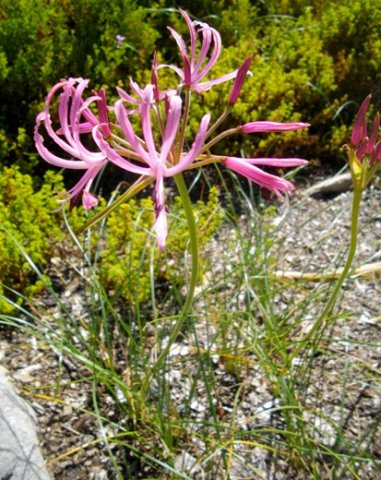Nerine appendiculata

Author: Ivan Lätti
Photographer: Thabo Maphisa
Nerine appendiculata, the grass-leaved nerine, is an evergreen, bulbous perennial reaching up to 90 cm when in bloom. The long, narrow leaves are linear and channelled.
The pink flowers grow in many-flowered hemispherical heads on hairy pedicels from a long, solid scape. A long and narrow, pointed bract is visible in the photo at the base of the flowerheads. The flower shape is irregular or zygomorphic, the narrow tepals curving back, crinkly along the margins in their upper parts. The stamens are unequal, of two lengths, with white lateral appendages at the base that gave the species its name.
Flowering happens in summer and autumn.
The species distribution is in the inland parts of the Eastern Cape and in south-western KwaZulu-Natal.
The habitat is marshy grassland at elevations up to 1800 m. The habitat population is deemed of least concern early in the twenty first century (Manning, 2009; Pooley, 1998; iNaturalist; http://redlist.sanbi.org).

